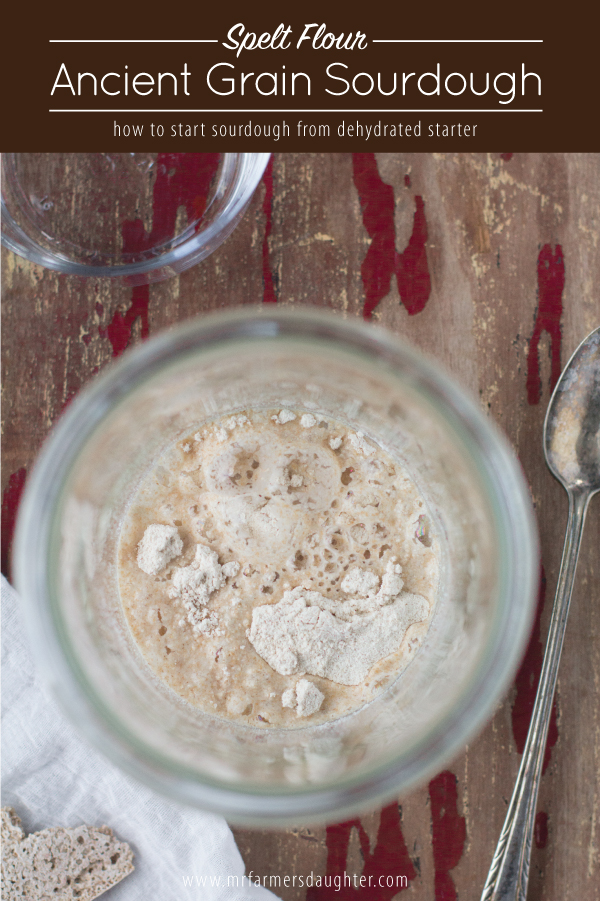
Today it hit me. It’s time to start playing with sourdough starter – again. I knew the urge would come swift and firm, I just wasn’t sure of the timing.
See, I’ve been blogging in some fashion for the last seven years, including documenting my original sourdough venture many years ago. Why I didn’t keep at it way back then, is kind of a mystery to me but just like the sourdough, the timing and circumstances must be right for me to do things. I tend to not jump into things without lots of information and capabilities. I flirted with blogging for years before I felt like I could be consistent and have something valid to say.
In the last seven years I’ve stopped feeling like I was playing pretend at food styling although playing the photographer and editor for the blog still feels like I’m faking it most days.
One of the things that has given me wings is becoming a county chapter leader for the Weston A. Price Foundation. With that volunteer position, I help people access local, nutritionally dense foods like pastured meats, raw milk and organic produce. We also have monthly meetings where we learn valuable information to achieve true health and wellness.

Our last meeting was about sourdough and fermenting and my friend, Pammi, did a fabulous job teaching us all about it! She even sent all of us home with dehydrated sourdough starter which I’ve been carrying around in my purse since. (If you can’t tell, she did the presentation in her photography studio with plenty of space for everyone!)
So, today was the day. I’d been wanting to try sourdough again although this time around I’ll do it a little differently. Last time I started it from scratch with flour, water and a few grapes to get the yeast started. I kept it going for a few months but ultimately, my family didn’t like it and I knew I had a problem with wheat so I let it go.
This time around I’m approaching it as someone who has an auto-immune disorder that dictates a limited relationship with wheat. Hashimoto’s Thyroiditis is an autoimmune disorder in which my immune system attacks my thyroid. Since wheat proteins mimic thyroid proteins, this essentially increases my antibodies and makes me feel not so good.
Yes, I know that spelt has some gluten in it, but, I also know that those proteins are from an ancient grain, not a modern grain. And, although it is a relative of wheat, the proteins in spelt perform much differently than the proteins in wheat. You can read more about it here if you like.
It would be great to do a gluten-free sourdough but in all honesty, I’ve read about it and learned that gluten-free grains are just not as stable to ferment as glutinous grain and I don’t like to feel like a failure. I like to do things in which I have at least a modicum of success.
So, this is the deal with spelt sourdough – if you’re celiac, don’t do it! Just don’t. Celiac is serious stuff and the gut most likely has been damaged beyond repair. Gluten-free eating is the only acceptable way to live for celiacs.
 Some of the bread I ate at the WAPF meeting!
Some of the bread I ate at the WAPF meeting!
However – if you’re gluten-sensitive, you may or may not be able to tolerate an ancient grain sourdough bread! Sourdough is essentially predigested for you. This makes it much easier on your digestive system and while you can make a sourdough bread with a short ferment, a longer (12-18 hour) ferment before baking produces a much kinder, gentler loaf of bread. I know. I ate a piece and a half of sourdough bread at our WAPF meeting last week with no ill effects whatsoever. That is the first time in 6 years. I was in Heaven.
Compare that with October of 2014 when I was accidentally glutened at a restaurant and spent the next six weeks with digestive issues, to put it politely. Healing my gut has been SO worth all the dollars, time and discomfort. Someday I hope to have a recap of what I did while working with my nutritionist for the last two years but for now, let’s just say, you may be able to be healed.
Now, on to the sourdough!
If you have a friend that maintains sourdough starter, beg some from her. Or, if you don’t, make a friend that has one, quick! (Or, you can buy some here.) You’ll need that to get started. Any amount will do. I would guess I probably had enough broken up pieces to equal a quarter cup.
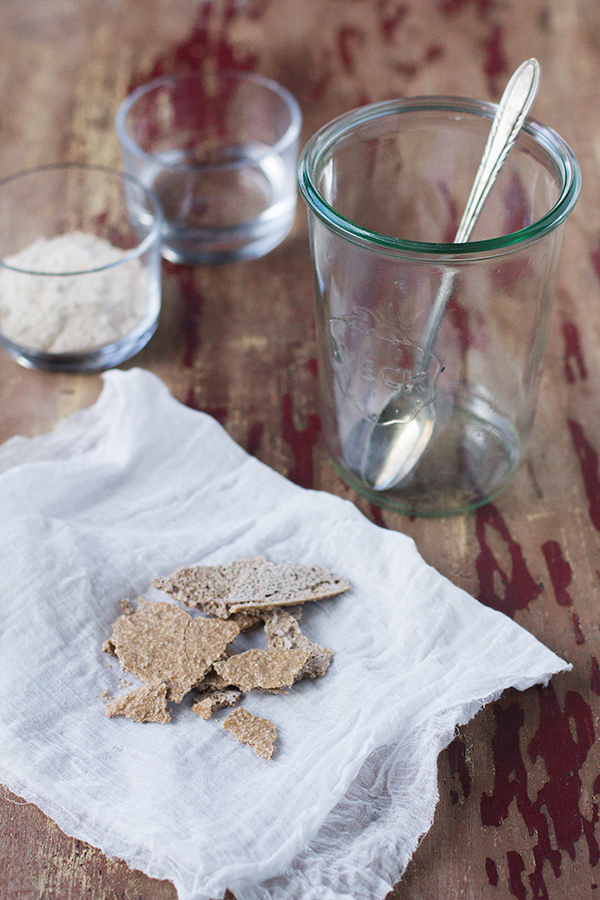
Use a jar or a crock, nothing plastic or metal. I can’t verify this but word on the street is that metal will kill a starter eventually. I’m not up to testing the theory. It’s that whole thing about failure again …
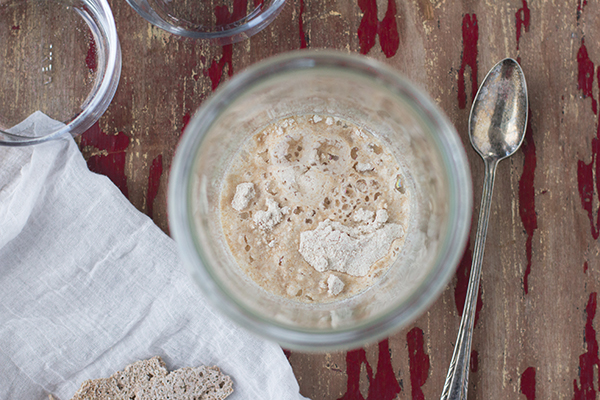
So, you have your jar, you have your starter, now you need a good quality whole grain spelt flour, preferably sprouted. I am using One Degree brand. You can buy that here.
This is not rocket science so measurements are approximate – I used about a 1/4 cup water and 1/4 cup spelt flour to get it started.*
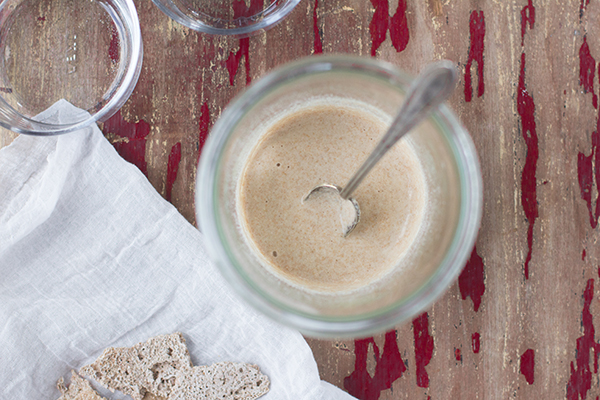
Mix them together.
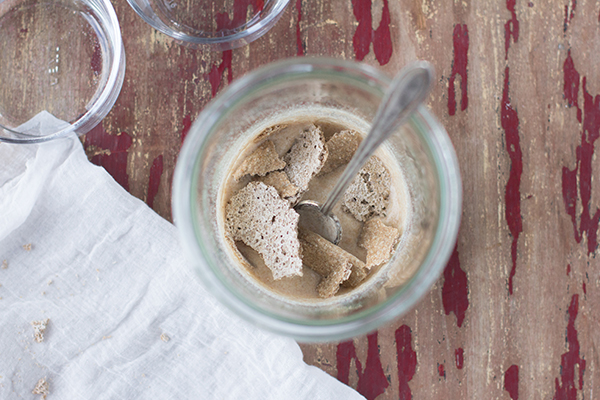
Break up the dehydrated sourdough and put it in the new mixture, stir well.
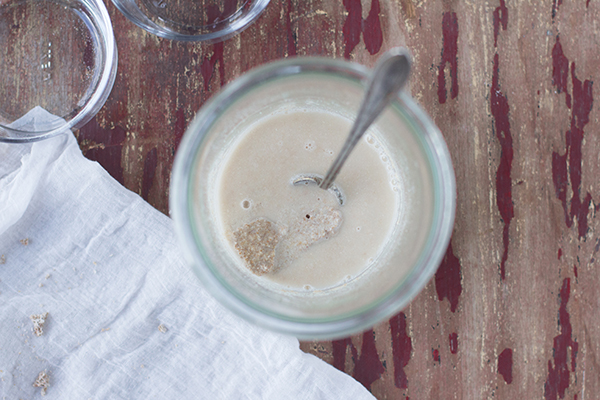
Over time, those pieces will absorb some water and incorporate into the slurry so I added another two tablespoons of water to account for that.
Now, stir.
In another hour, stir it well again. Stirring helps to activate the little buggers in the starter so there is no such thing as too much stirring at this point.
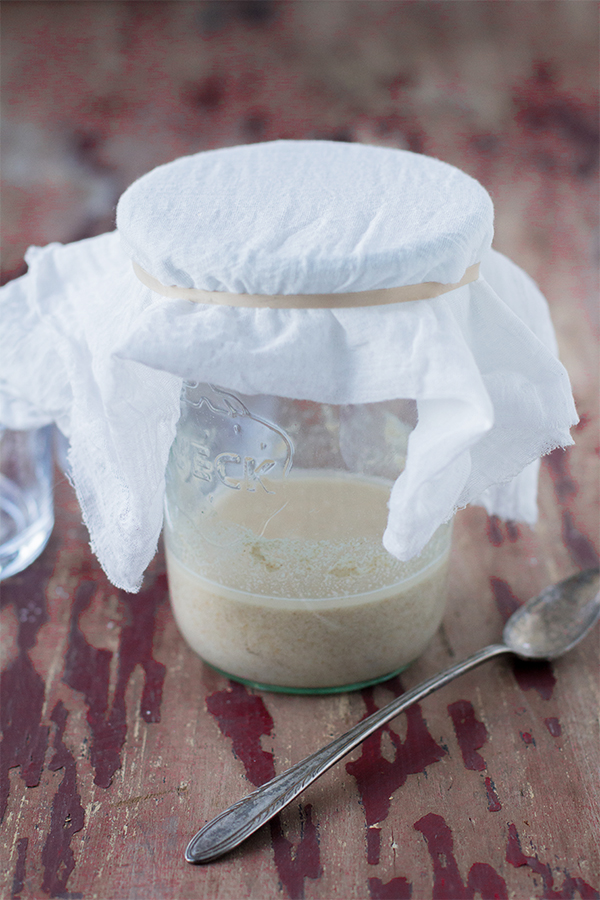
Sit the jar in an obvious place in your kitchen so you don’t forget about it. Room temperature (68˚-72˚ is good). The warmer the room is, the faster the bacteria will eat up the sugars in the flour. Cover with a cloth and stir a few times a day for the next day. The mixture should begin to produce some bubbles that break on the surface slowly. This is good!
The next day, mix up a half cup flour and half cup water, more or less. Stir this into the mixture and repeat the next two days, stirring several times a day.
You will repeat this, adding more flour, approximately doubling the amount of starter each time you add to the mixture. So, if you have 1 cup of starter, you will add a total of another cup of fresh flour and water. And, stir. Always stir well.
This is the point I am at right now. Look for a new post next week updating on how it’s going and what I’m going to do with it.
It may take a couple weeks to develop a strong starter, so be patient. And, if you need to slow it down, don’t be afraid to put it into the fridge for it to sleep after feeding it. You will need to repeat the “wake up” process again though beginning at the *, minus breaking up the starter pieces, in this post.
